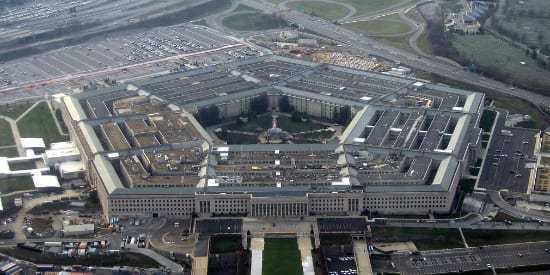In the current situation, after the withdrawal of the US military contingent from Afghanistan and the Taliban (the movement is banned in Russia) came to power in this country, Washington is actively making adjustments to its strategy in Central Asia. As can be seen from the changes in the actions of the White House, on the one hand, Washington is not ready to come to terms with the loss of influence in the region. On the other, it seeks to turn Central Asia into a geopolitical confrontation with Russia, China, Iran and several countries in solidarity with them. At the same time, the US is striving to preserve its monopoly on managing extensive cross-border processes its intention to dominate world politics.
Washington’s updated strategy for Central Asia today includes counteracting the activity of China and the influence of Russia in the region, ensuring regional isolation of Iran to remotely control the situation in Afghanistan, creating or maintaining a hotbed of tension in the center of Eurasia and the SCO space. The main goal of these actions is to export destabilization from Afghanistan, for which there are tremendous opportunities: drug trafficking, the growth of religious extremism and terrorism, etc.
As part of the long-term work of the US in the Asian direction, there is a desire to create a Washington-London-Tel Aviv-Doha-Islamabad axis to annex the capitals of individual Central Asian countries. In general, it reflects the well-known concept of Greater Central Asia voiced by Professor Frederick Starr.
To strengthen aggressive actions, the NATO bloc is activating in the West. The Quad (Quadrilateral Security Dialogue) is in the East, with the desire to entice India into the anti-Chinese military-political link. The creation of AUKUS, a trilateral defense alliance of the United States, Great Britain and Australia, is also aimed at this.
After the withdrawal from Afghanistan, for the loss of the possibility of conducting technical intelligence in the territories of neighboring countries of Central Asia, Iran, Pakistan by the United States, military-diplomatic activities are unfolding on the development of new facilities for conducting legal, technical intelligence in the direction of Afghanistan and adjacent regions on the territory of one of the countries of Central Asia, as well as Pakistan. The US began searching for new opportunities for the deployment of the US Army, particularly in Central Asia, right after the withdrawal of the armed forces from Afghanistan on August 31, 2021. Information about this was already appearing in The Washington Post and several other American media outlets. Although Russia, like the Central Asian republics, initially opposed such desires of the US, American diplomats persistently continued to explore various options for restoring access to bases in Central Asia, including facilities in Kyrgyzstan and Uzbekistan, where they were previously located. So, these aspirations of Washington can be traced in its negotiations with Uzbekistan. It is proposed to bypass the legislative ban on the deployment of military bases of foreign states on the territory of this country by creating the so-called “counter-terrorism centers.” American representatives are making similar attempts in Turkmenistan, Tajikistan and Pakistan.
To implement its updated strategy for geopolitical confrontation with Russia, China, Iran and some countries in Central Asia, Washington began to actively involve Asian states close to it, especially South Korea and Japan, using them to slow down Eurasian integration. In particular, it was evidenced by the example of Mongolia, which, under the influence of Washington, rather quickly signed two agreements on free trade zones (FTZ) with South Korea and Japan, which complicated its conclusion of the same deal with the EAEU. Similar aspirations can be traced concerning Uzbekistan as part of the preparation for a similar agreement on creating a free trade zone with South Korea, which may also become a deterrent in its legal rapprochement with the EAEU.
An essential aspect of the adjusted US strategy in Central Asia is the preservation of instability in Afghanistan using various proxy resources and anti-Taliban forces. And here, according to Washington’s plans, the use of American private military companies would play an important role. In early December, the meeting in Dushanbe between the leader of the National Resistance Front of Afghanistan, Ahmad Massoud and the founder of the US private military company Blackwater, Erik Prince, was clear proof. Previously, Massoud had appealed to what he called “Afghanistan’s friends in the West” to speak for him in Washington and New York, in Congress and Joe Biden Administration.
According to the New York Times, in mid-September, Ahmad Massoud Jr., the leader of the new anti-Taliban resistance, hired a public relations company in Washington to help him gain military and financial support from within the United States. At the same time, the publication quoted the representative of Massoud in Washington, who confirmed the fact of signing a contract with the lobbying firm Robert Strike. According to him, the main goal is to stop any attempts by any government to give legitimacy to the Taliban or anyone else, apart from Massoud as the legitimate leader of Afghanistan.
At the same time, Politico reported in September that Republican Senator Lindsay Graham had declared his support for former Afghan Vice President Amrullah Saleh. To bolster the legitimacy of the anti-Taliban resistance as part of a revised White House strategy in Central Asia, Graham linked Saleh and Massoud to prominent British and Indian diplomats and important media figures.
Valery Kulikov, political expert, exclusively for the online magazine “New Eastern Outlook”.
Related posts:
Views: 0
 RSS Feed
RSS Feed

















 January 7th, 2022
January 7th, 2022  Awake Goy
Awake Goy 




 Posted in
Posted in  Tags:
Tags: 
















